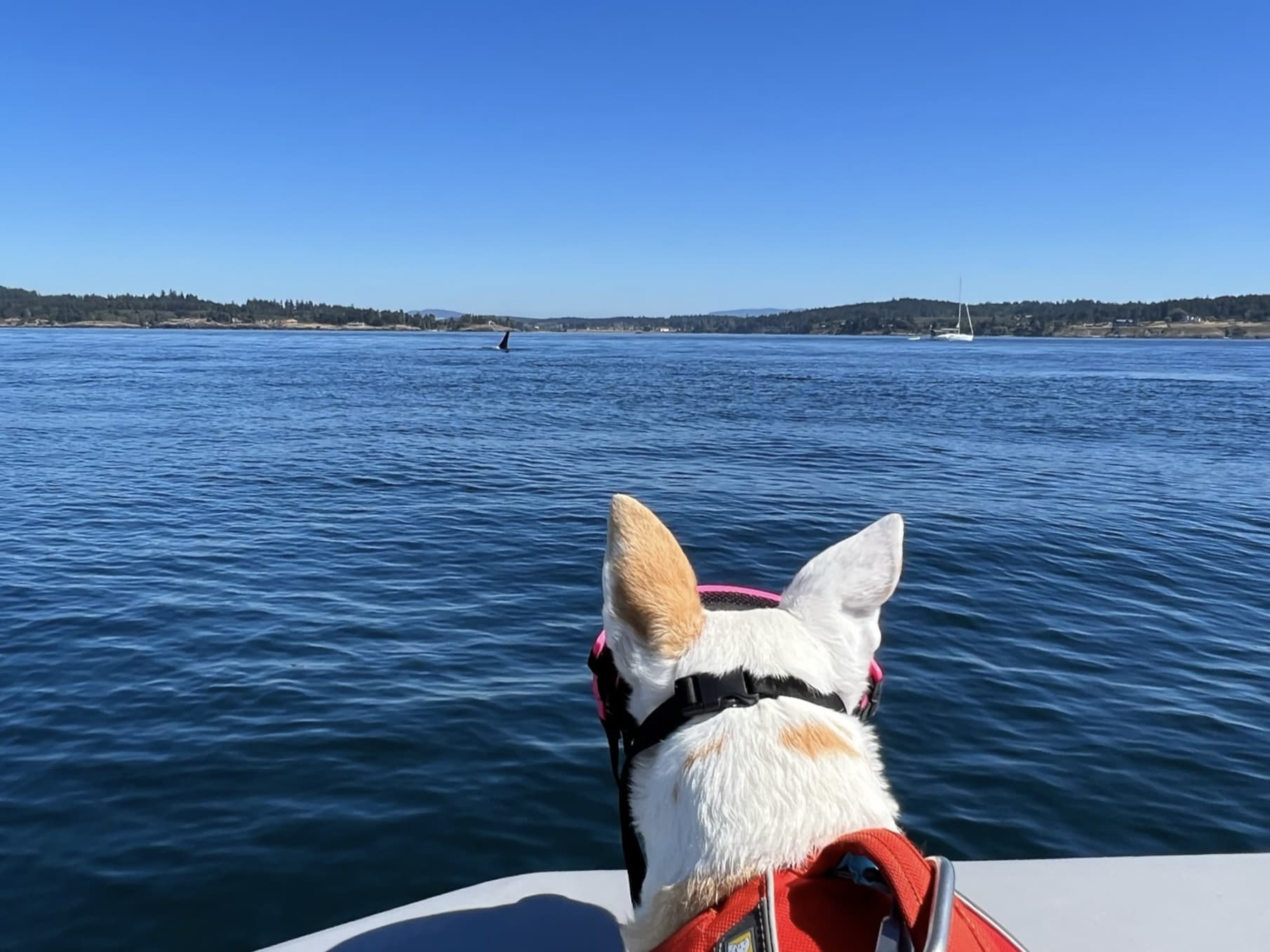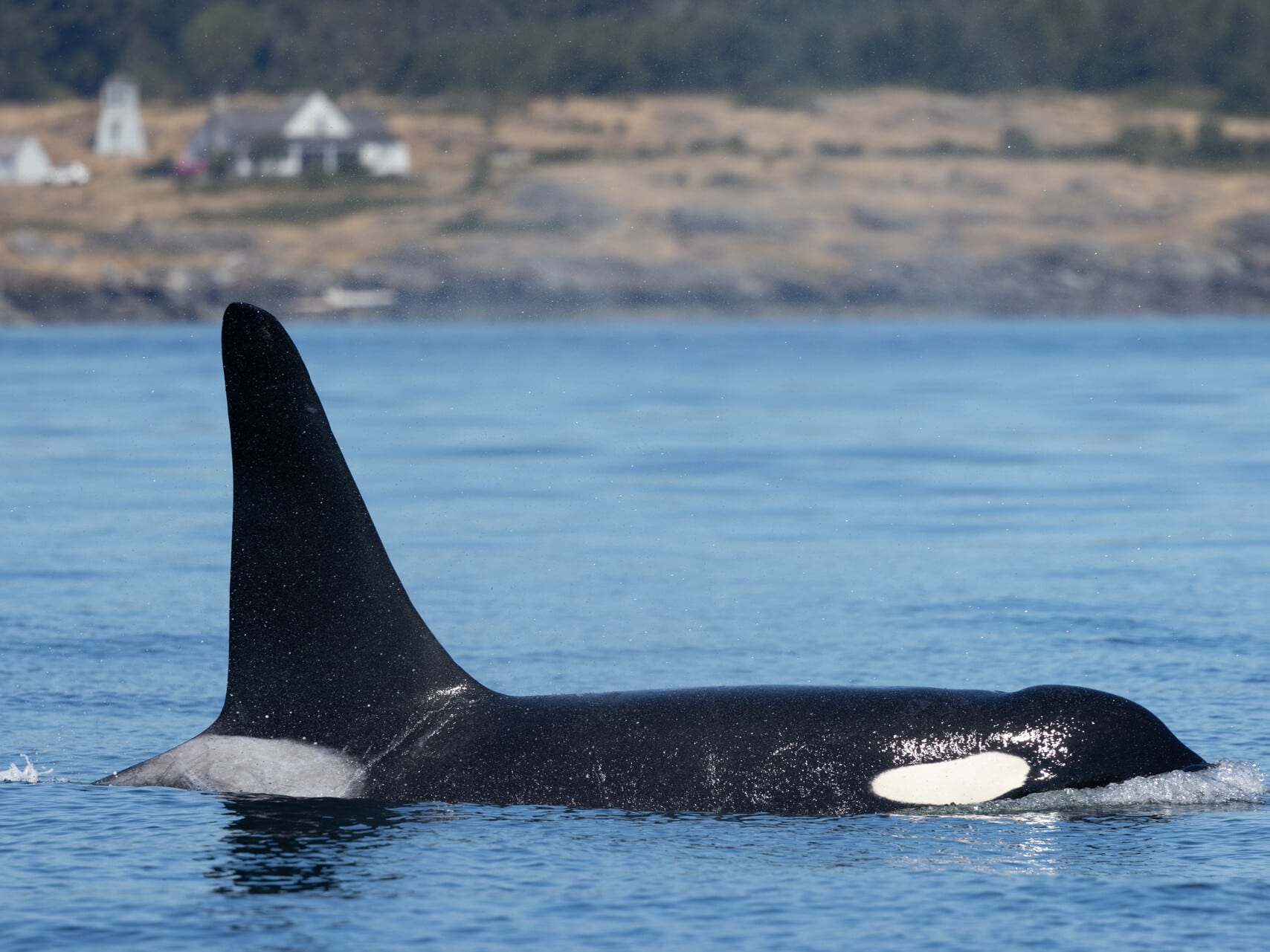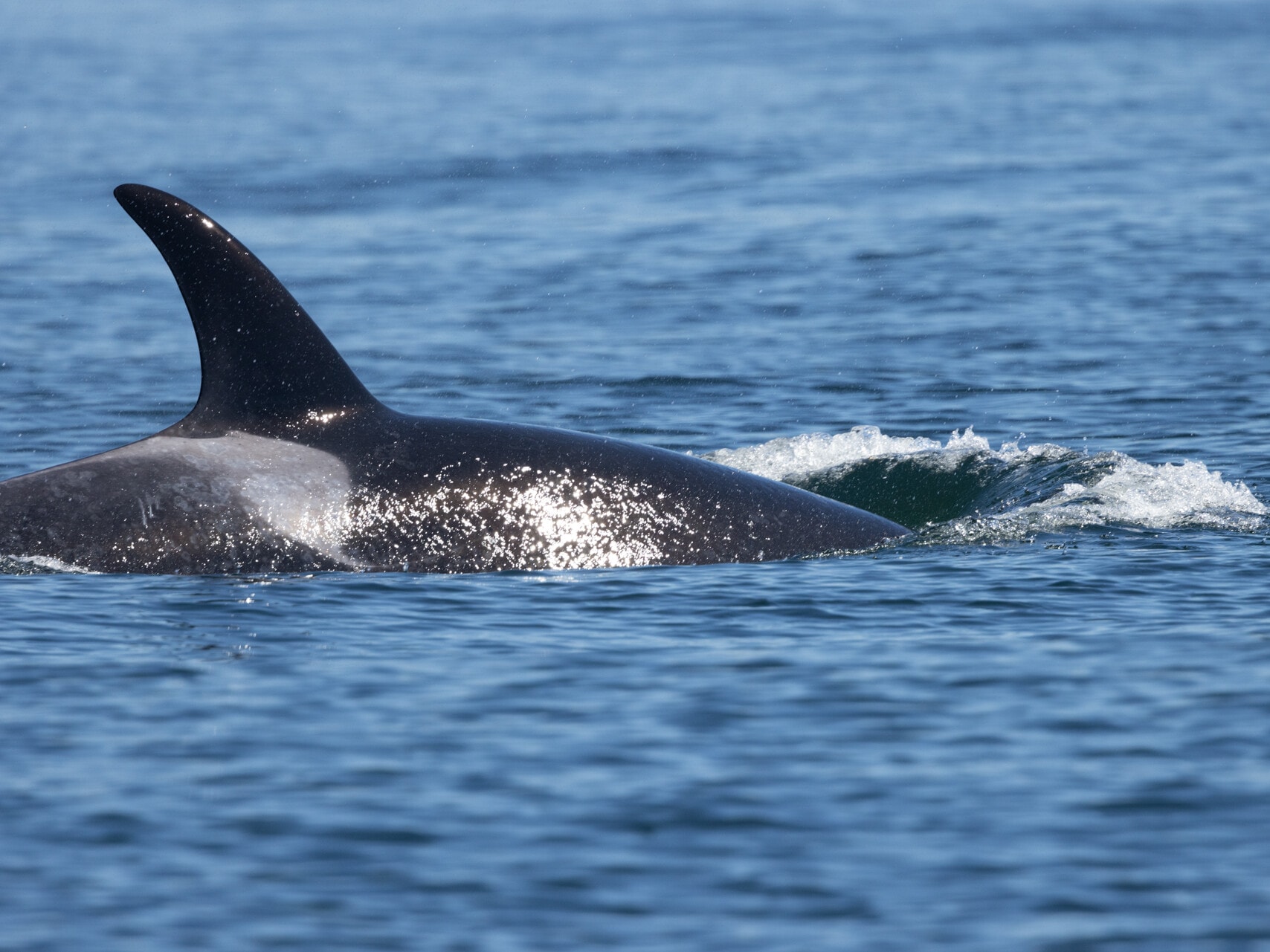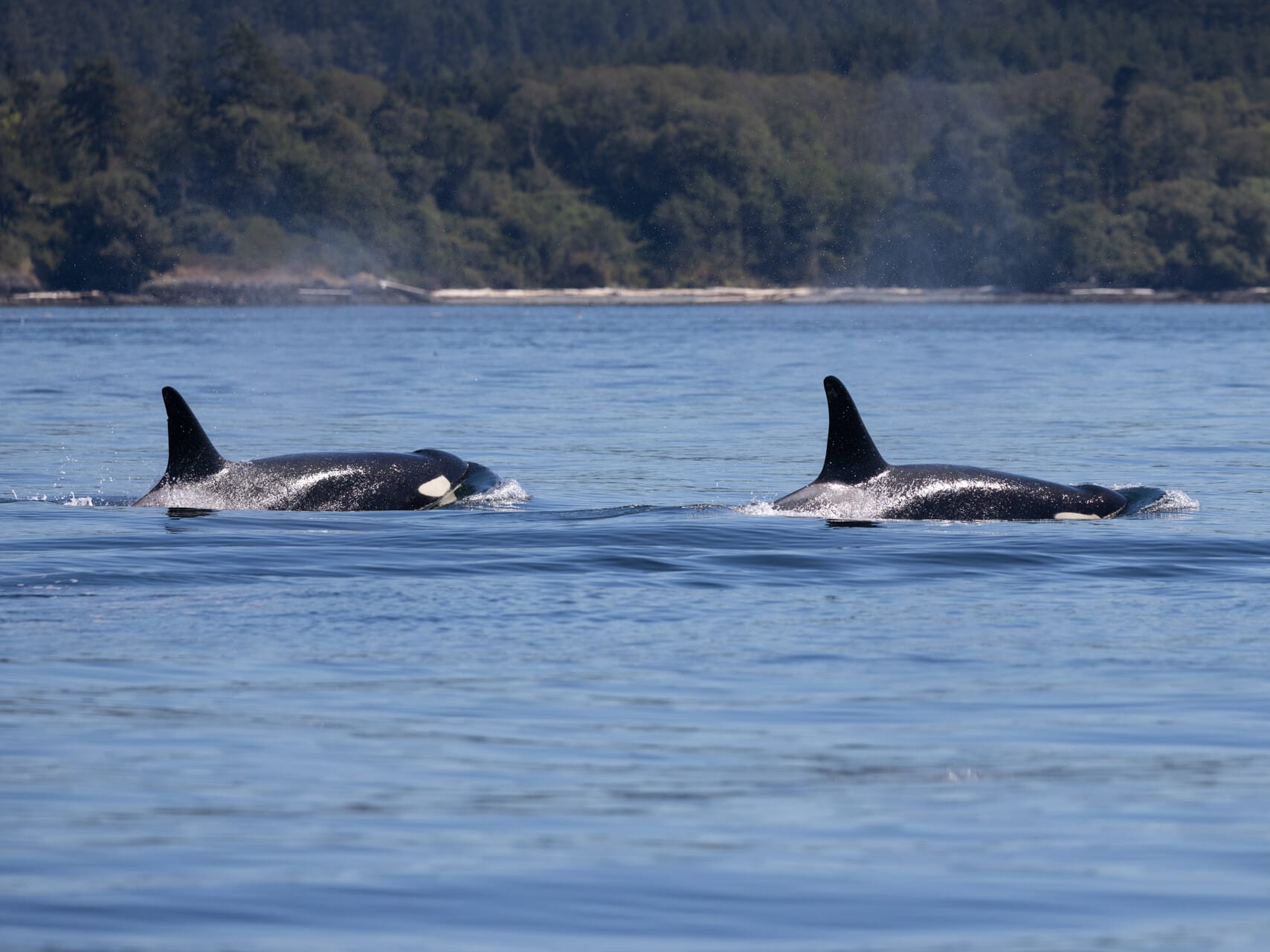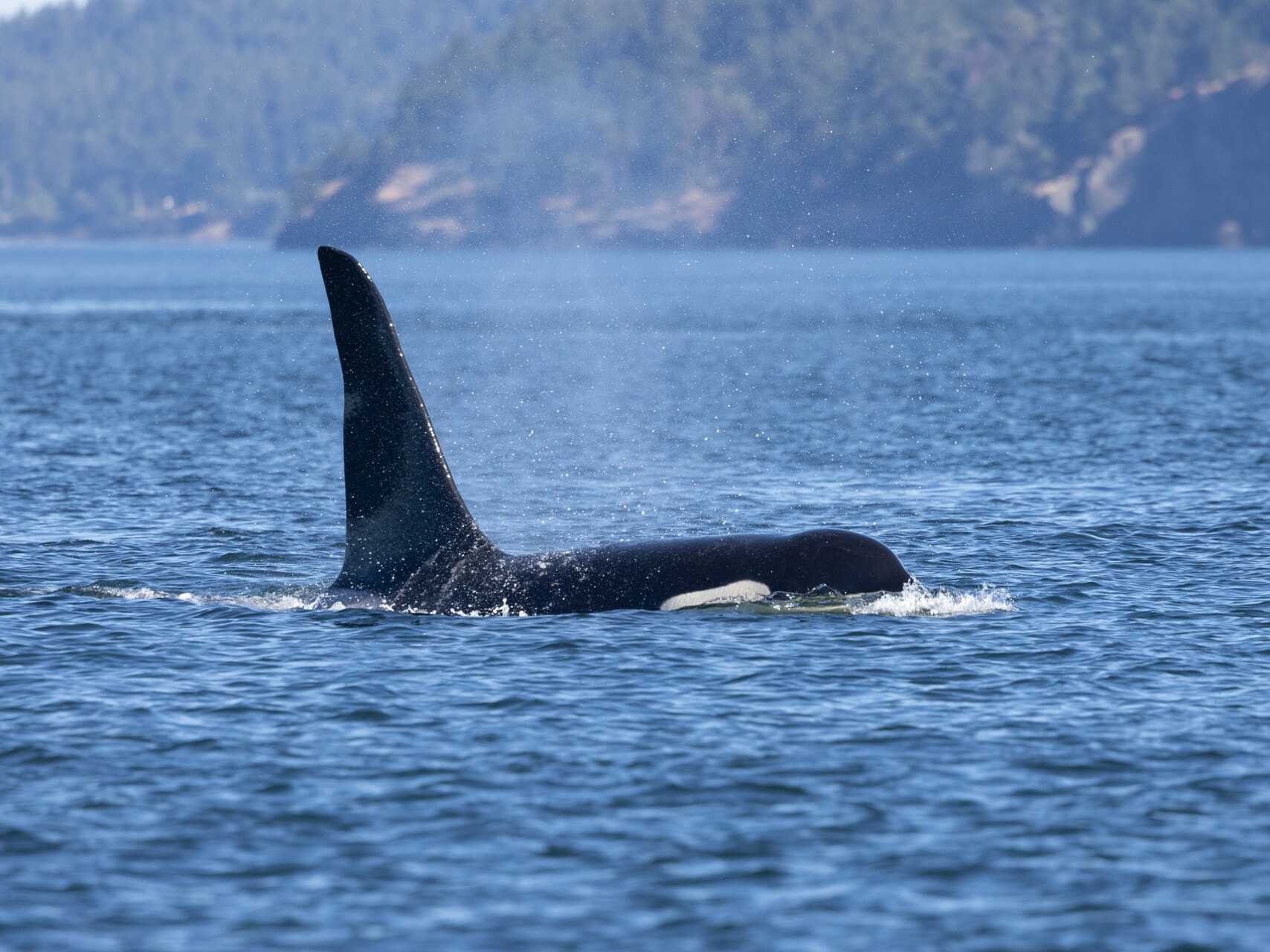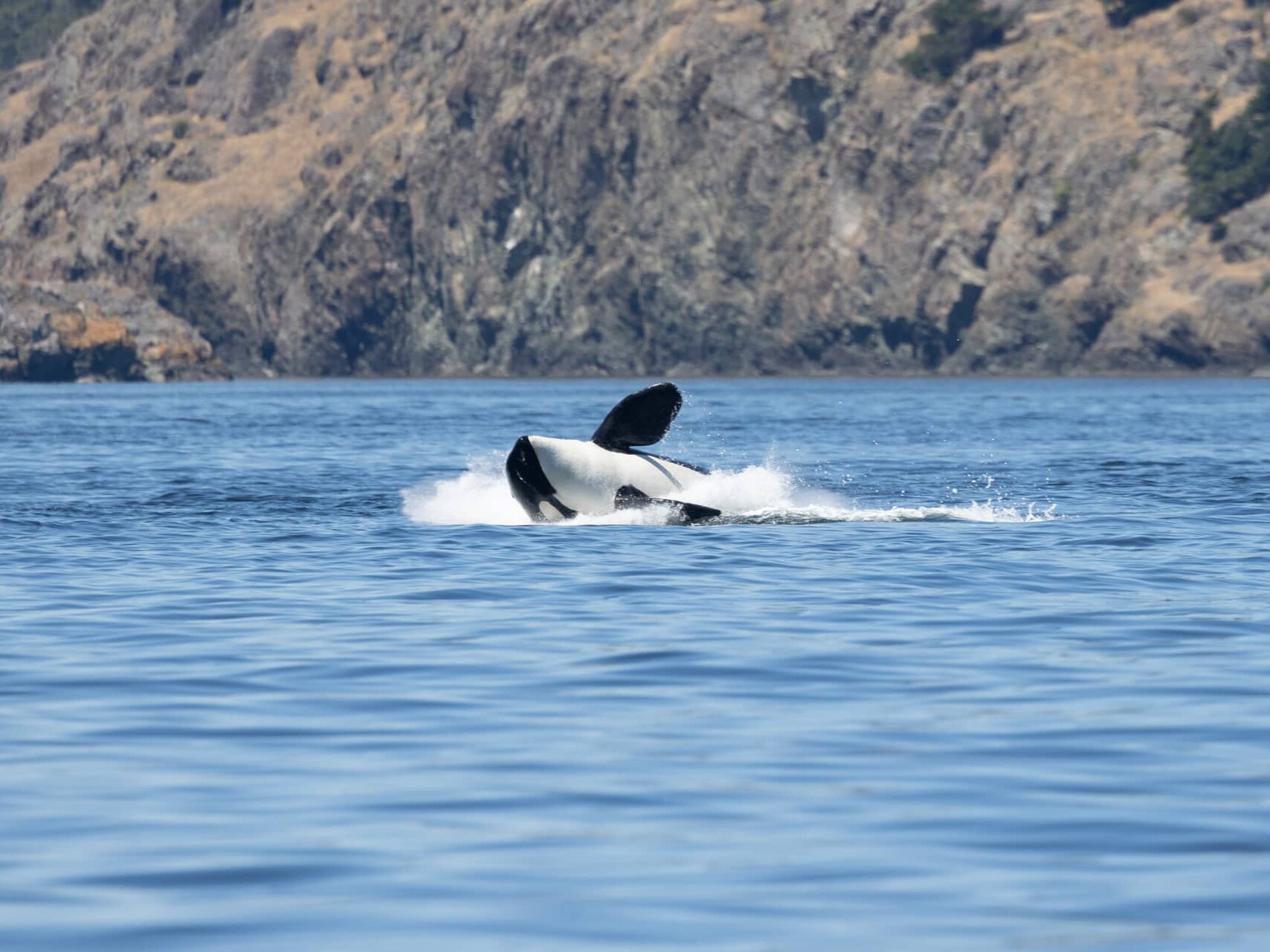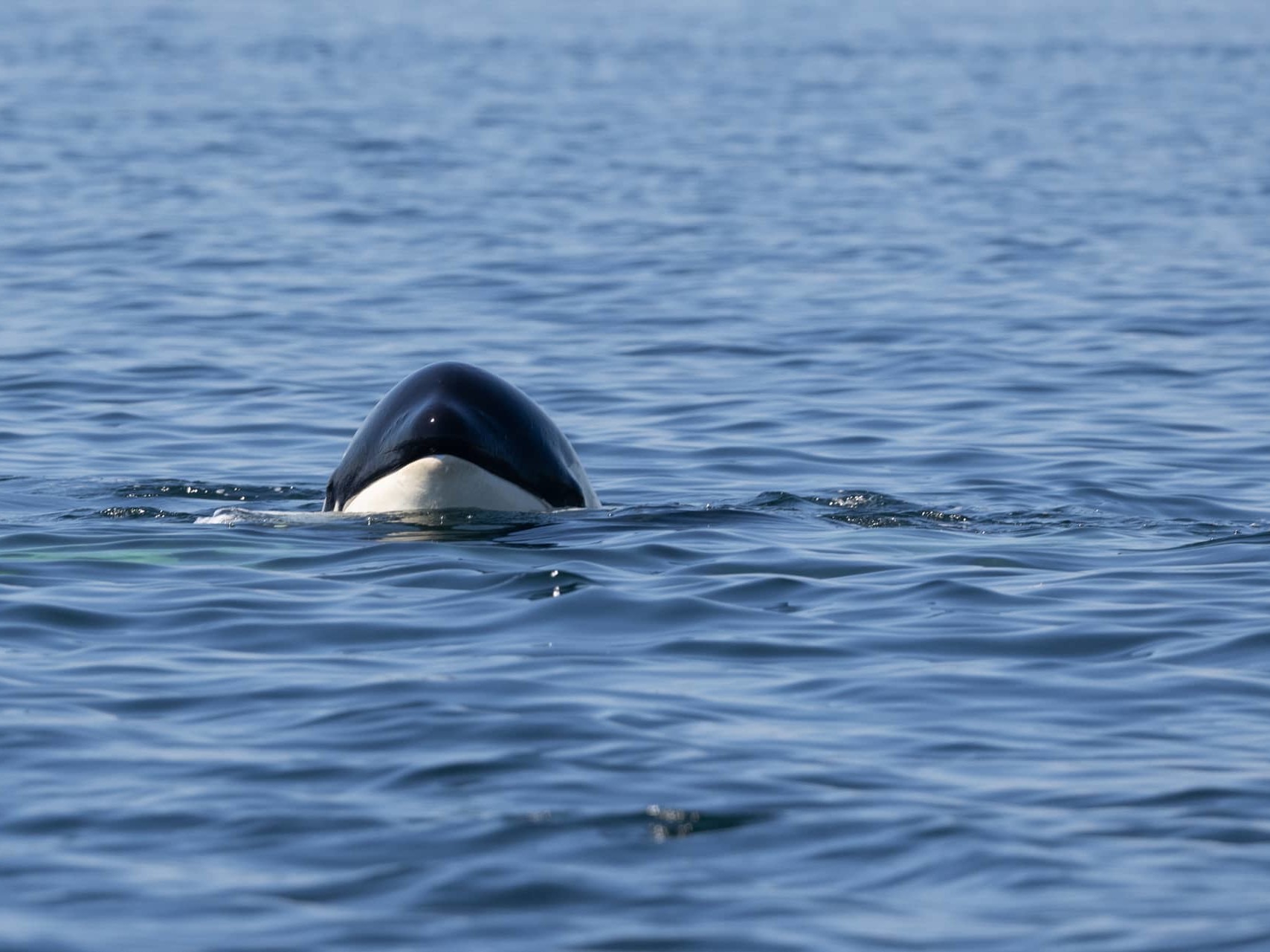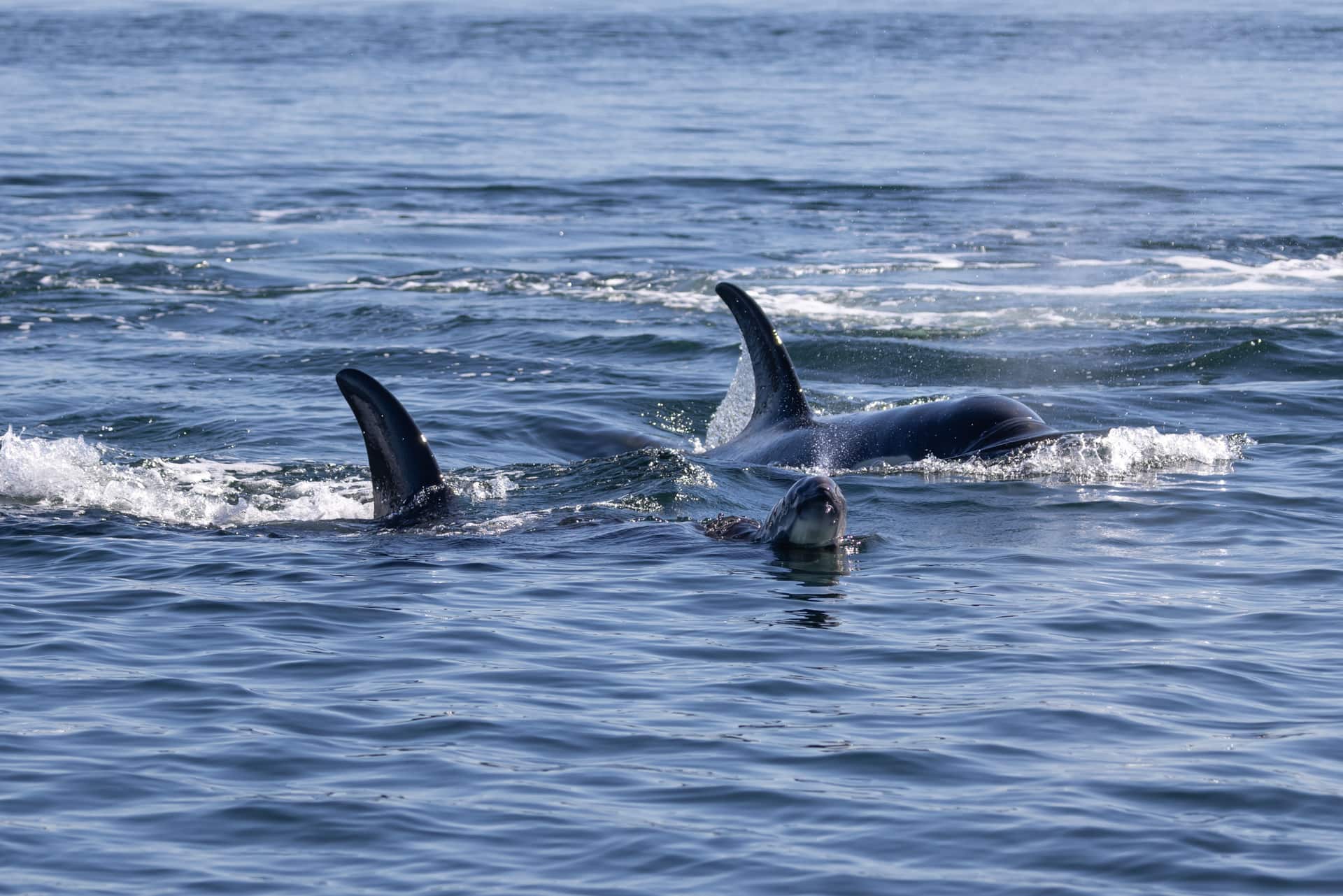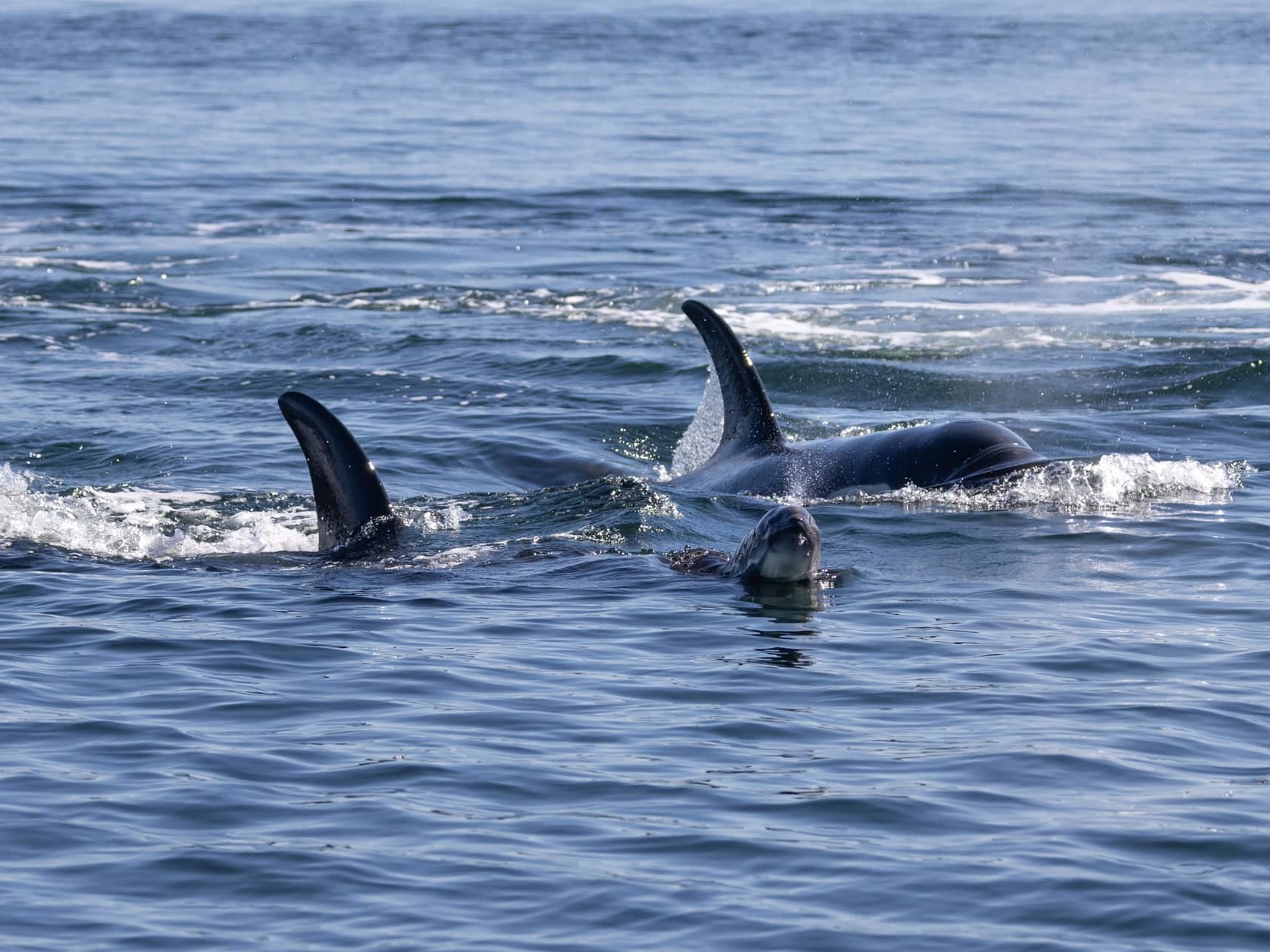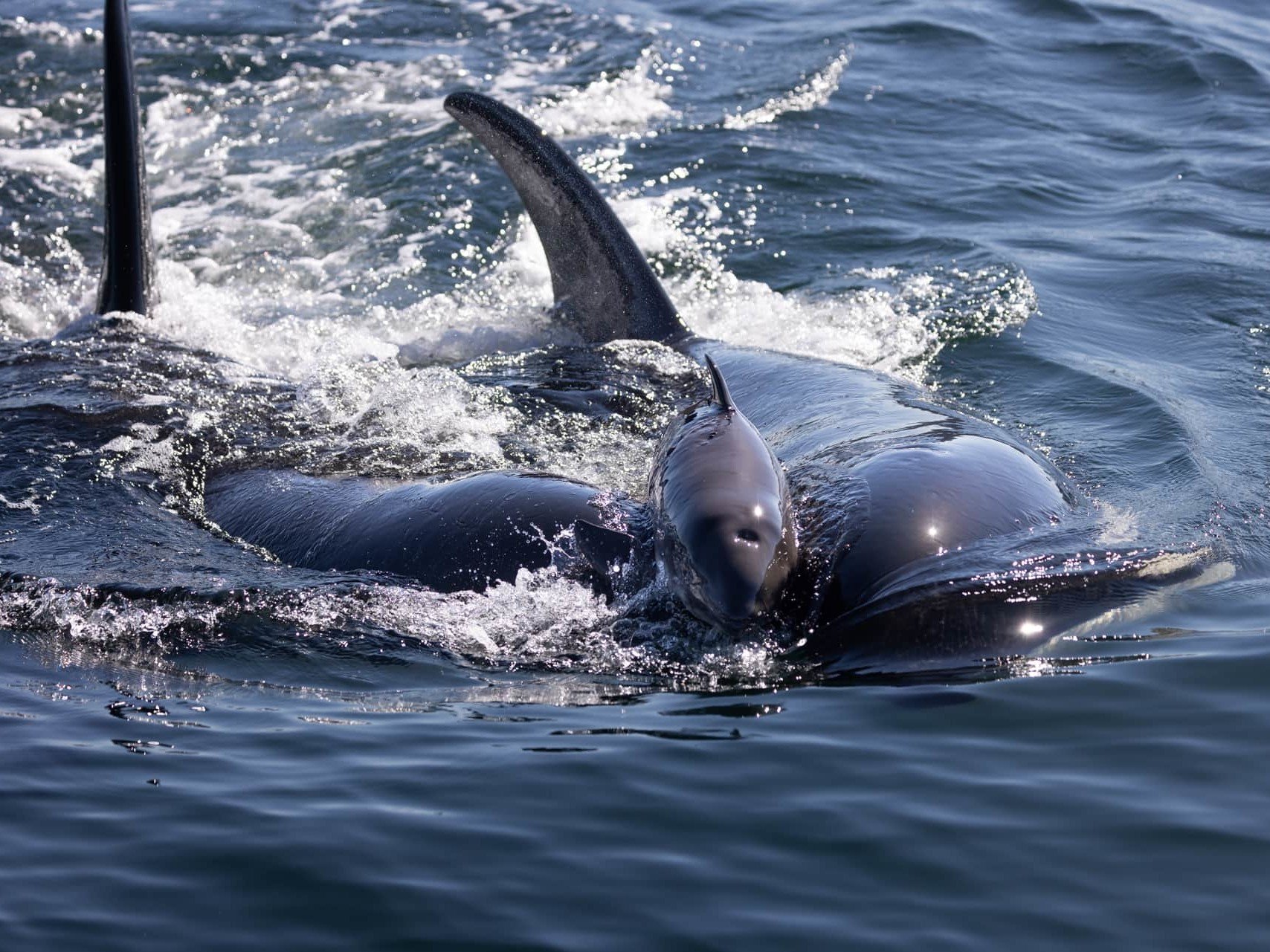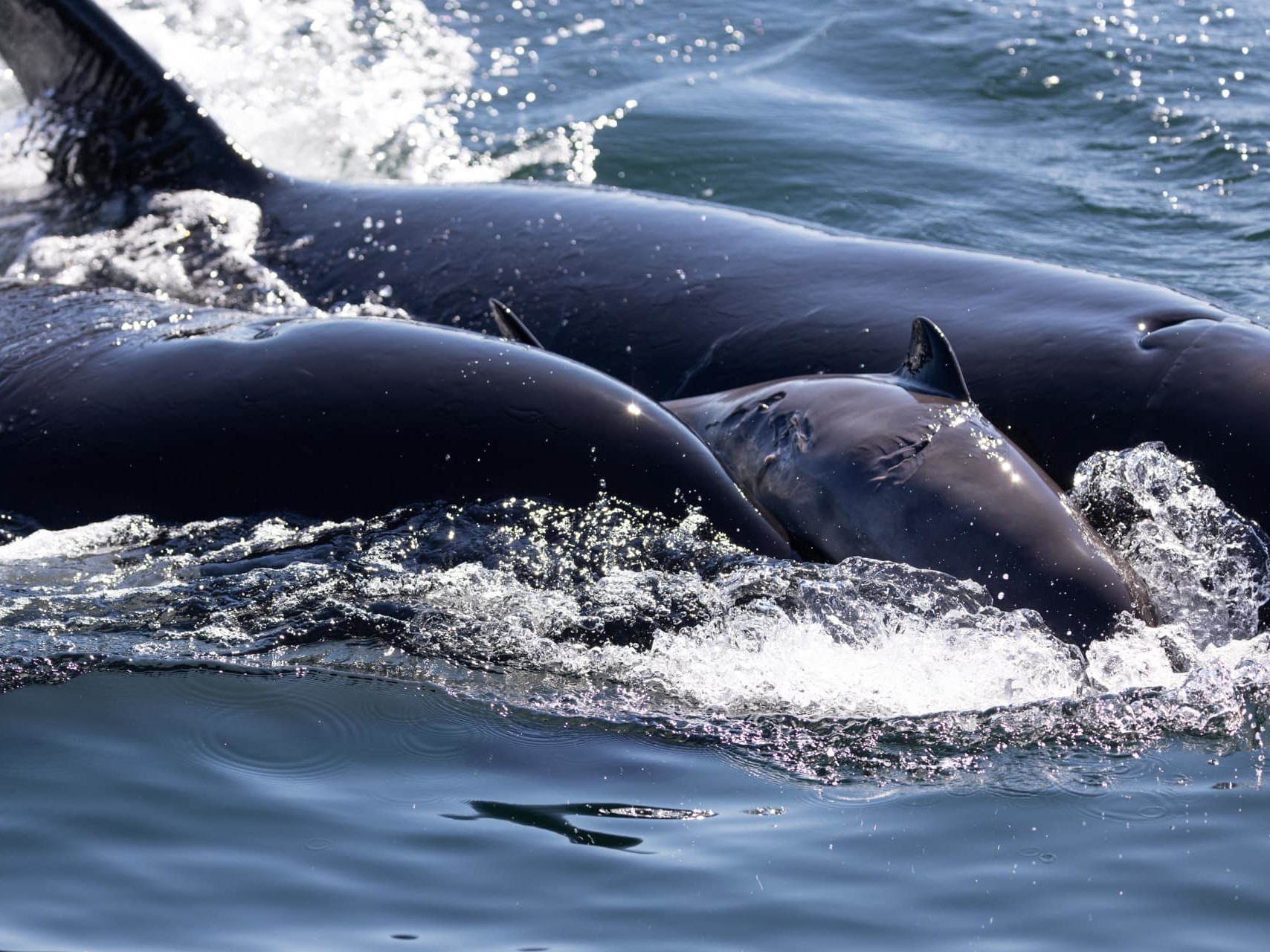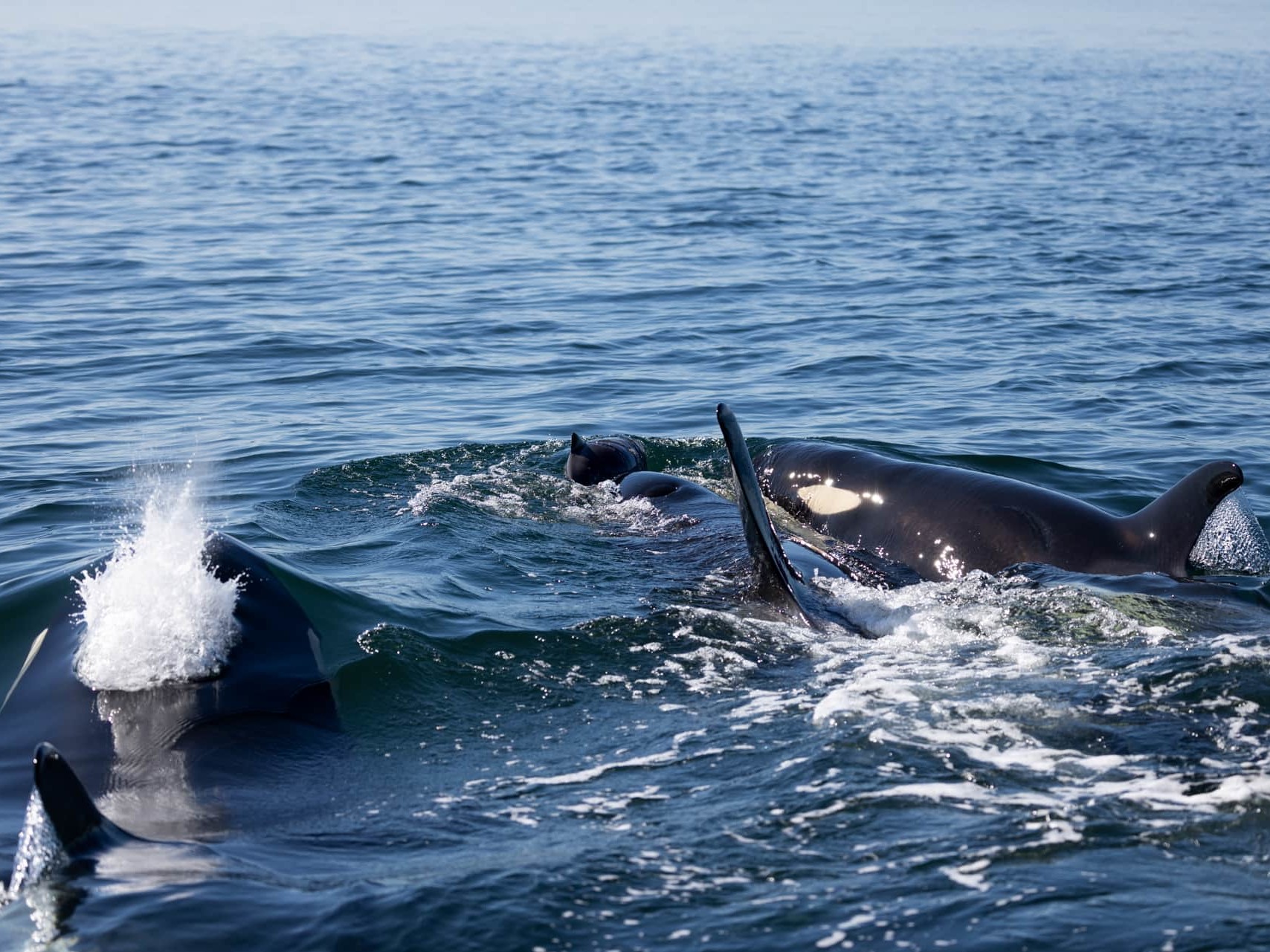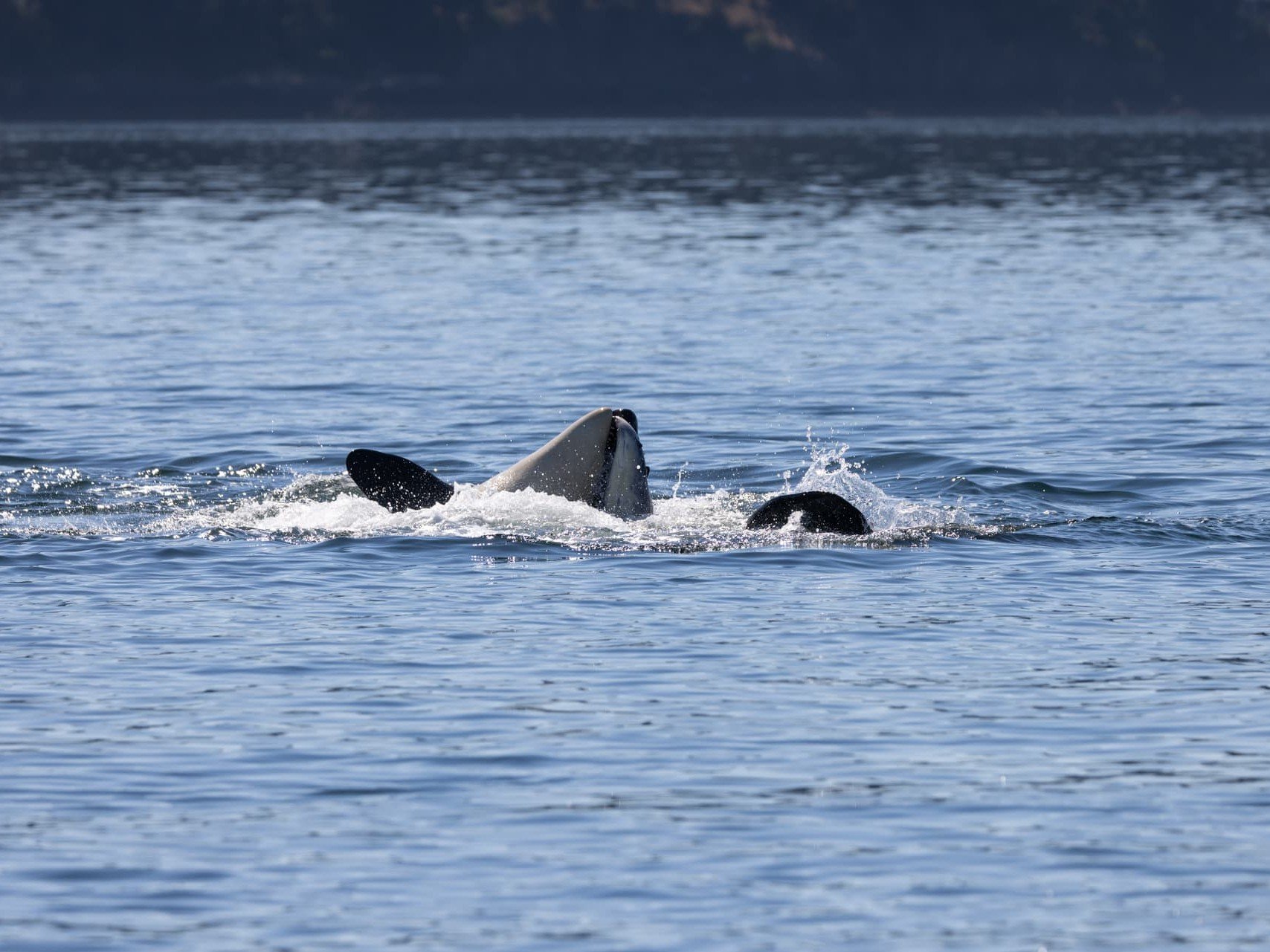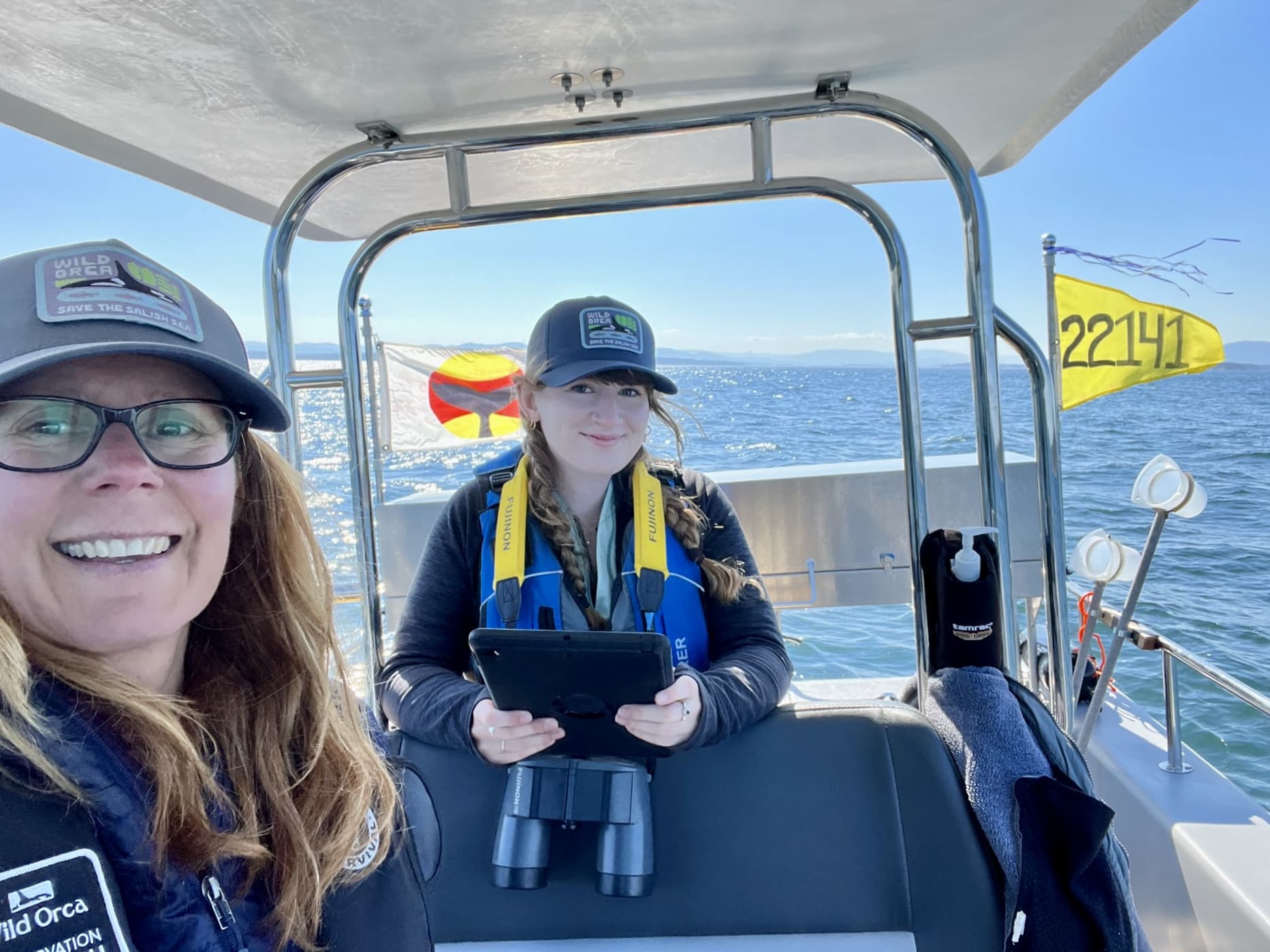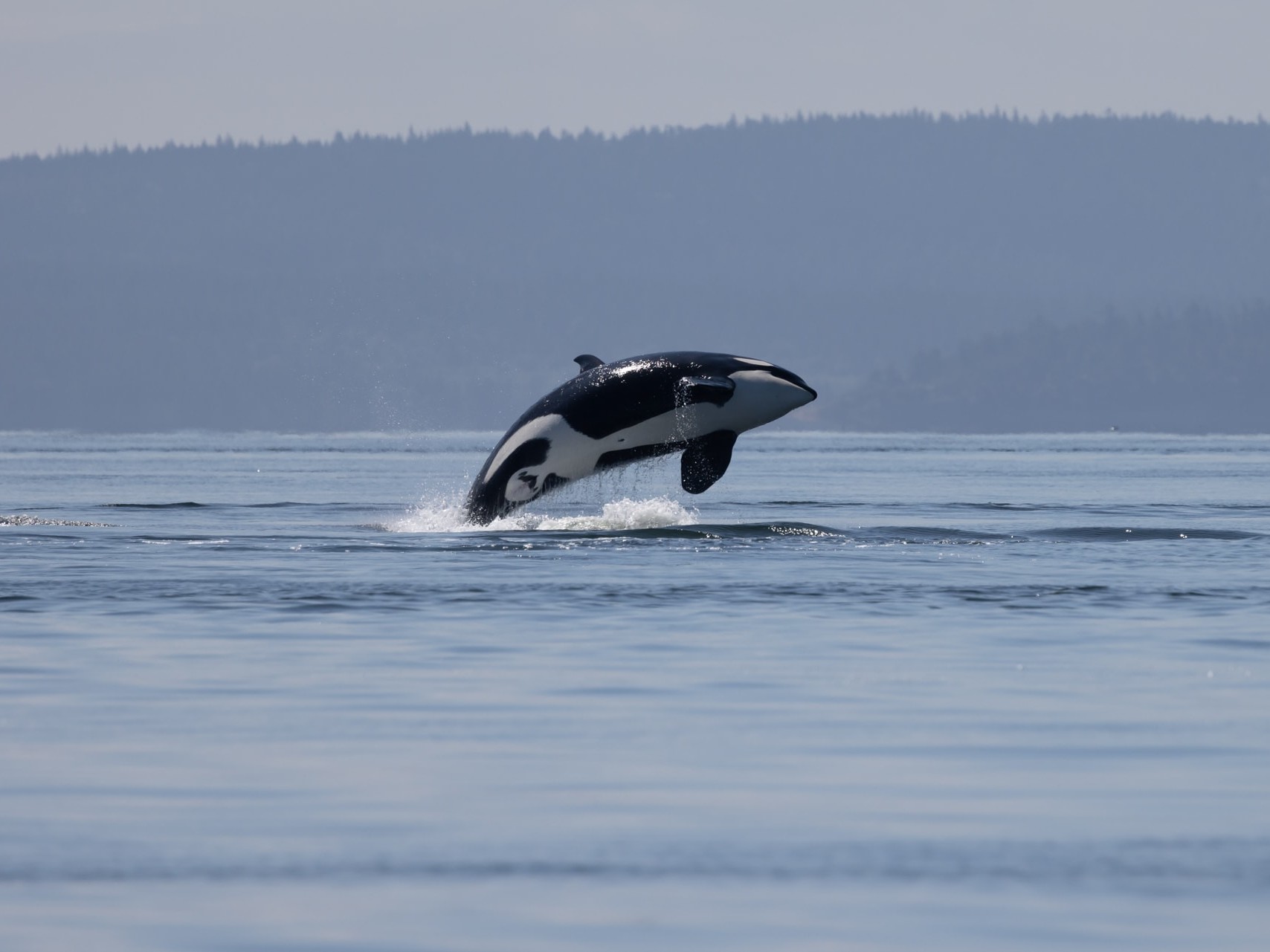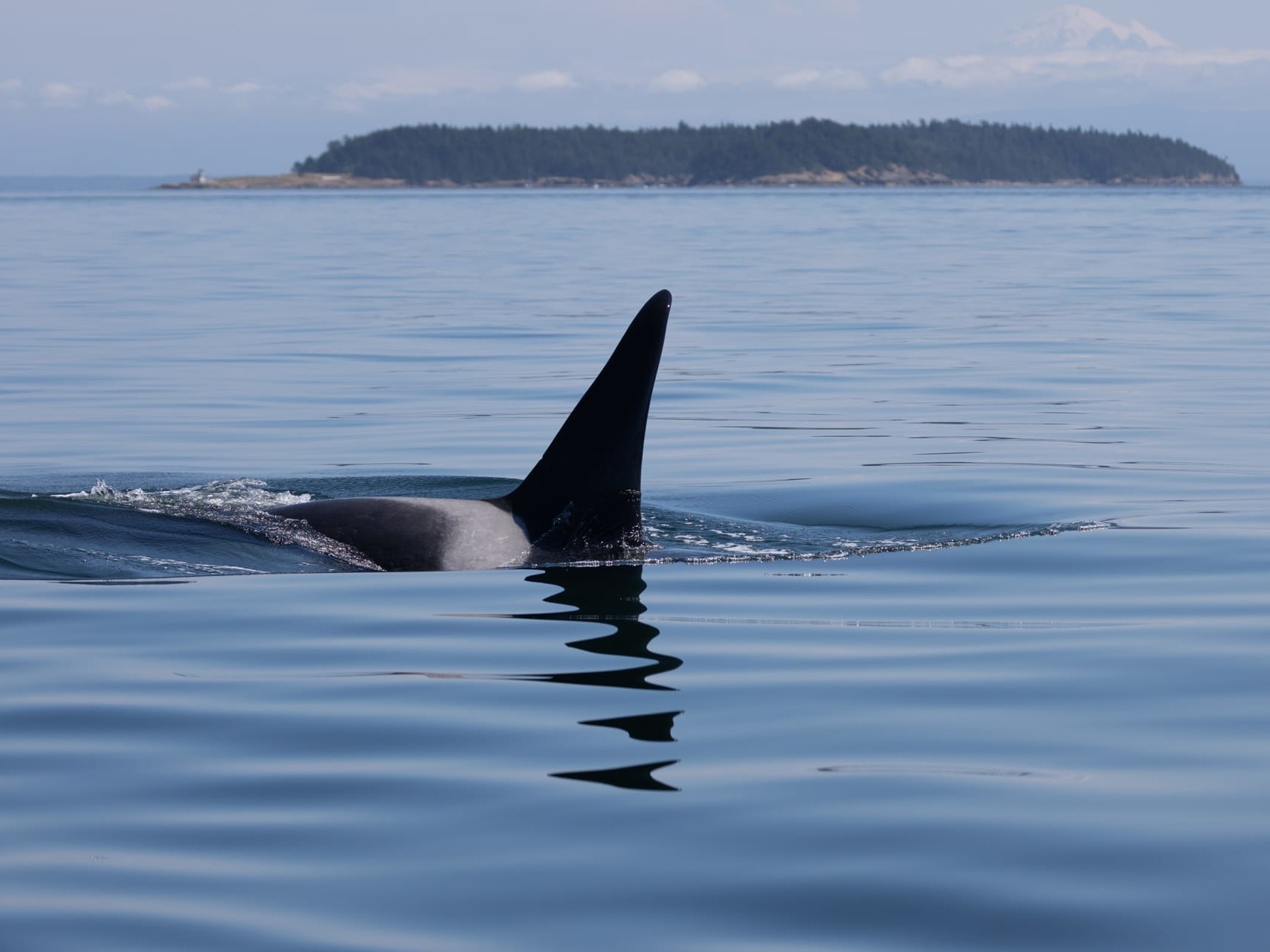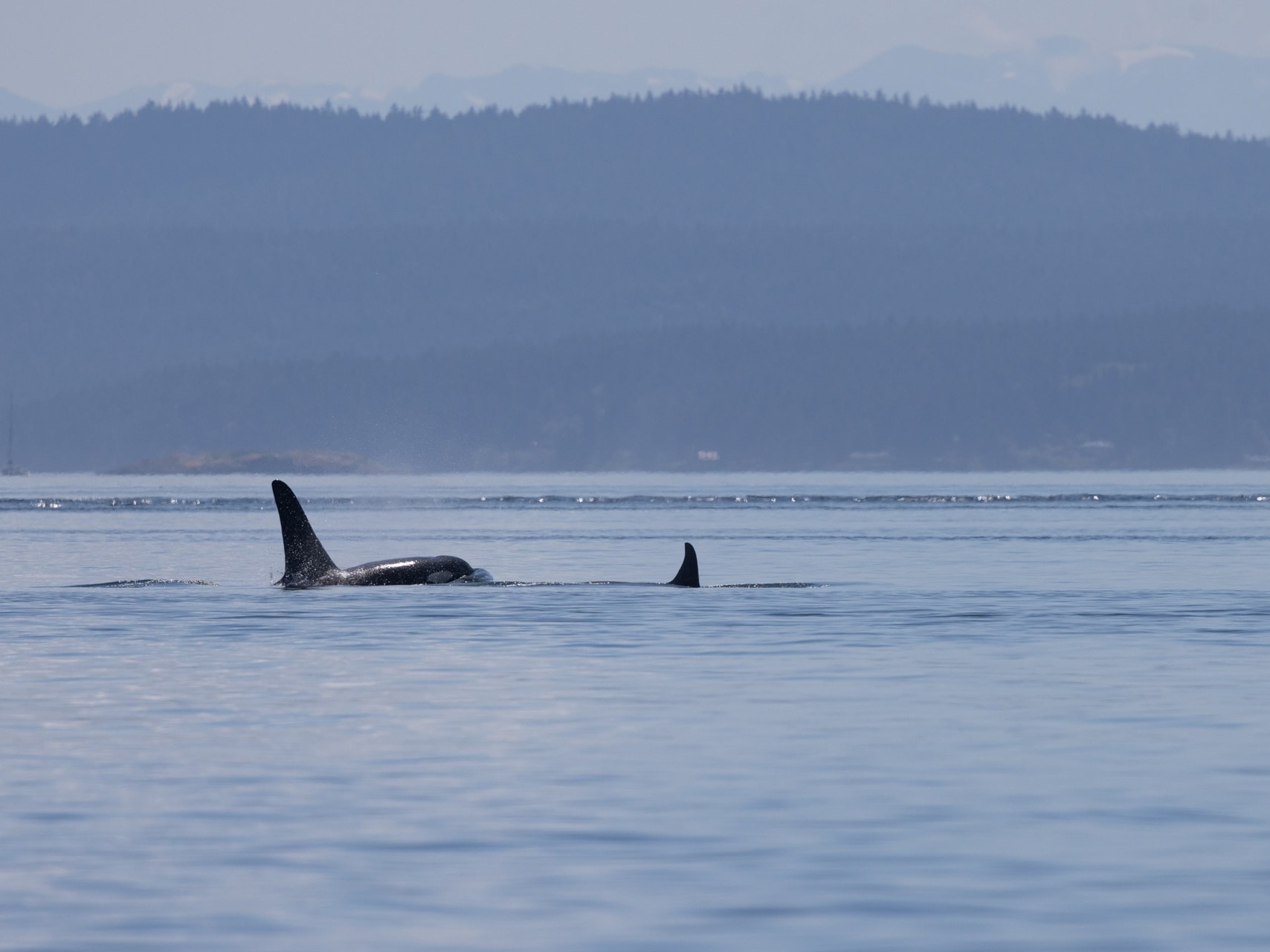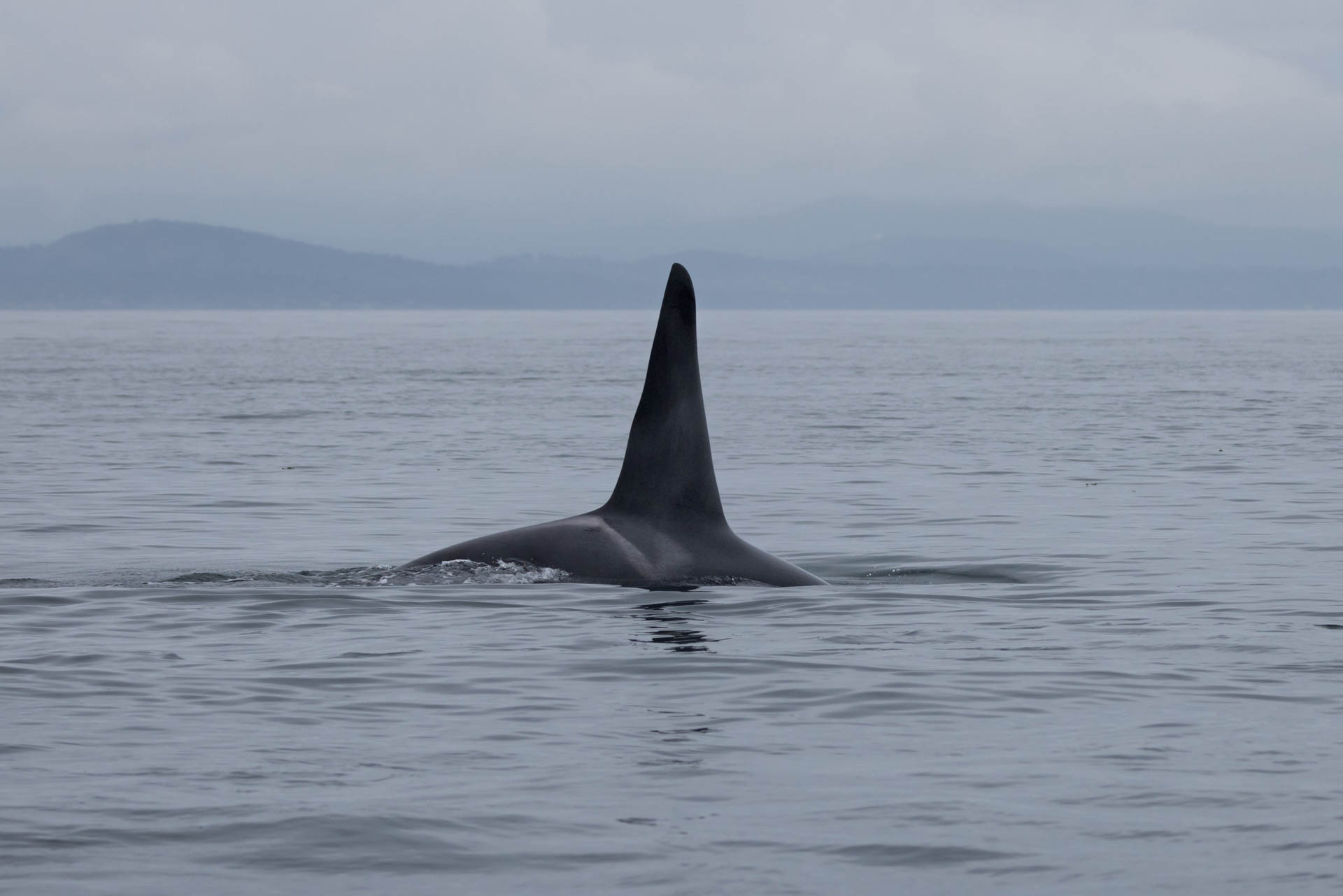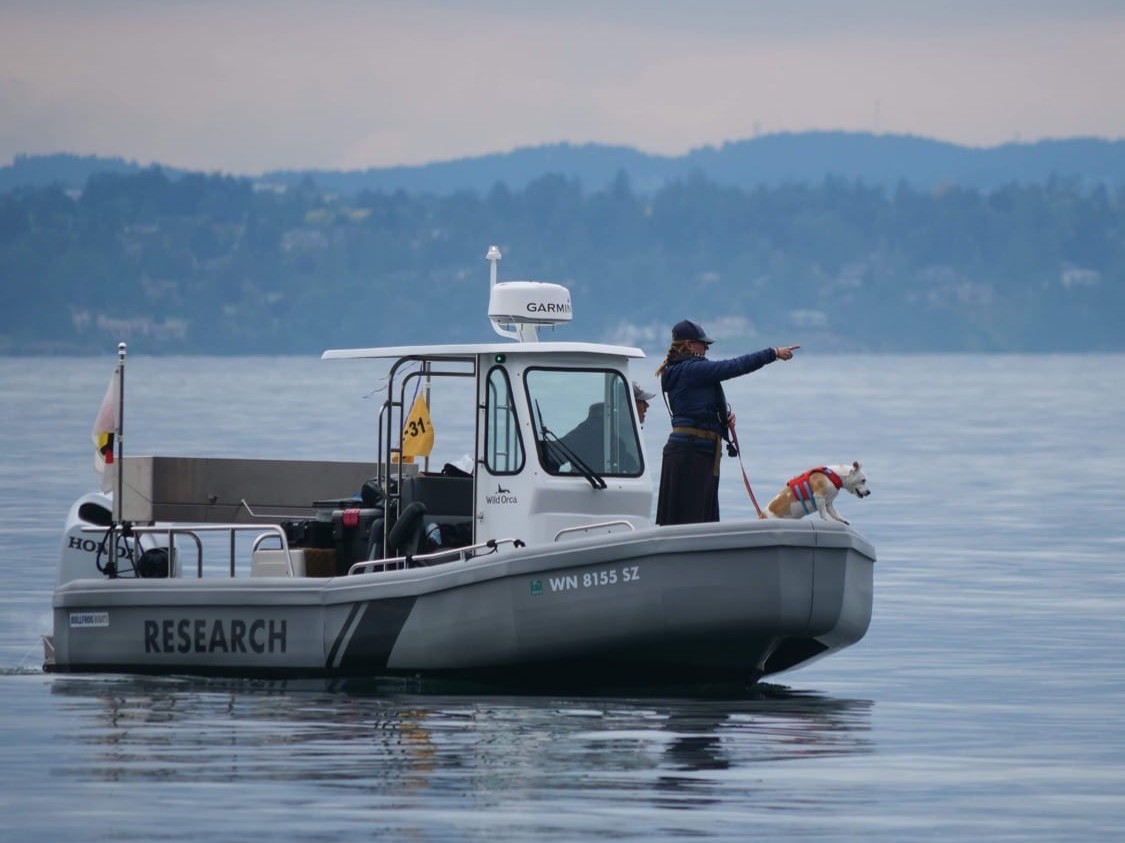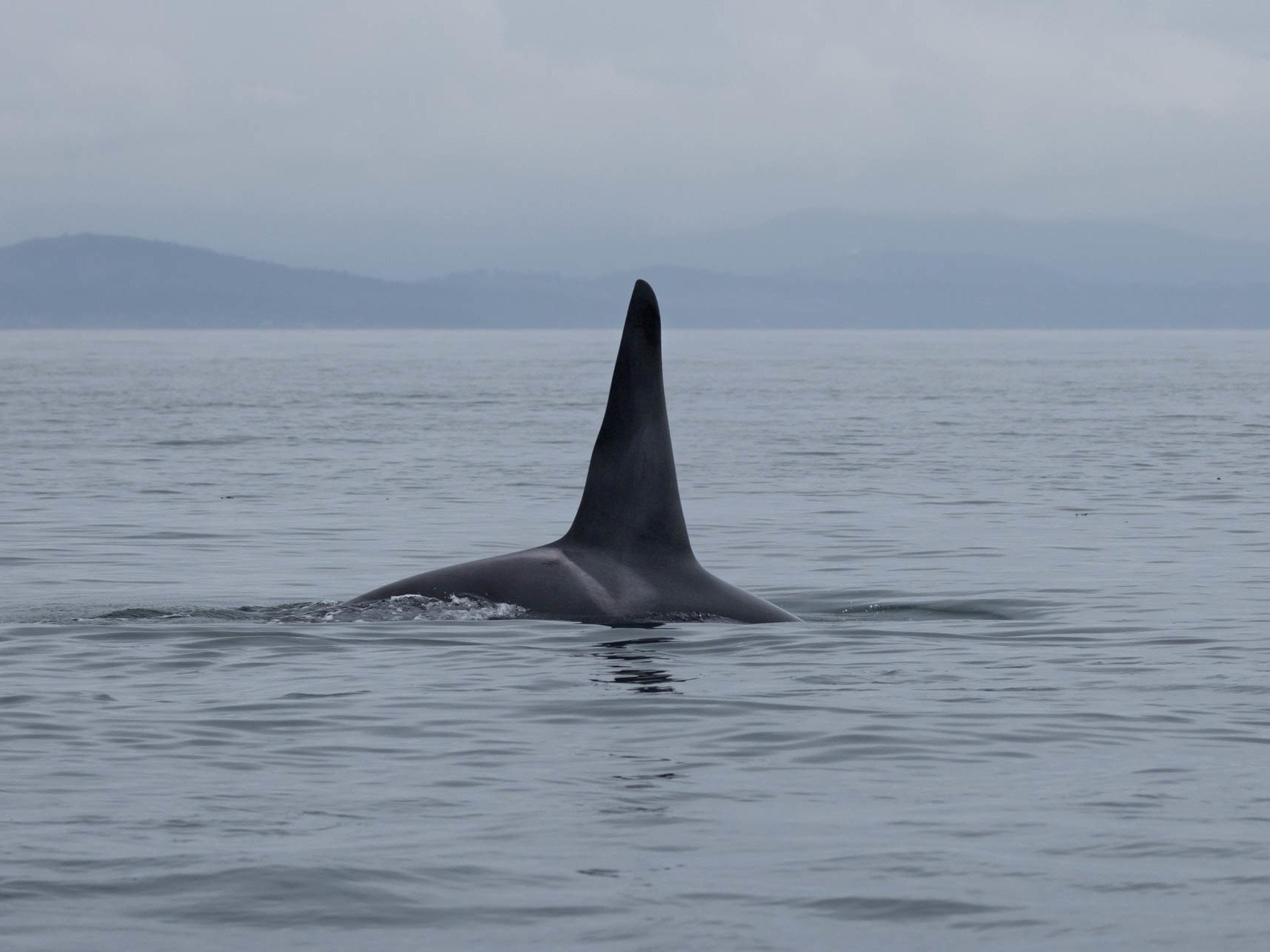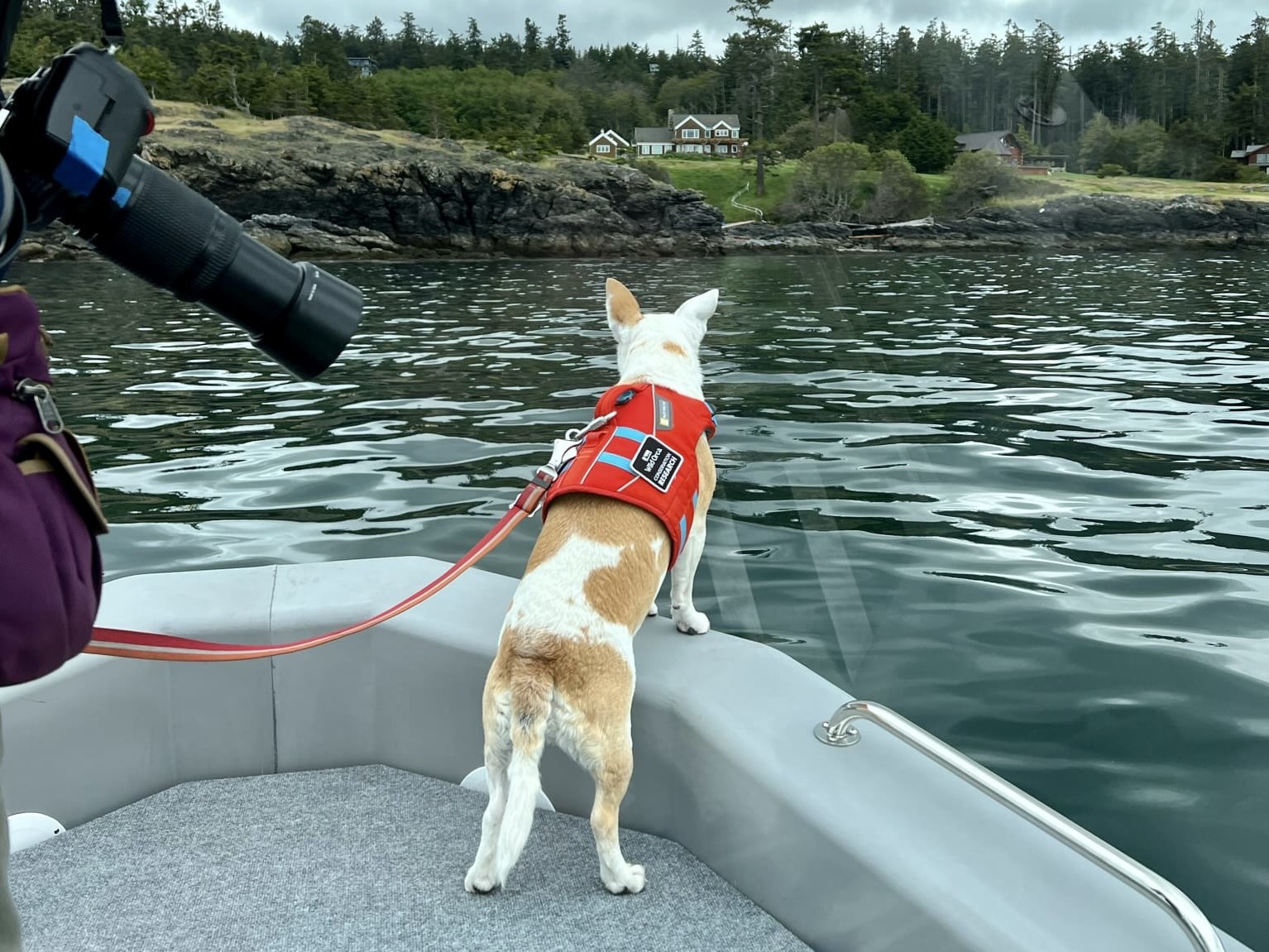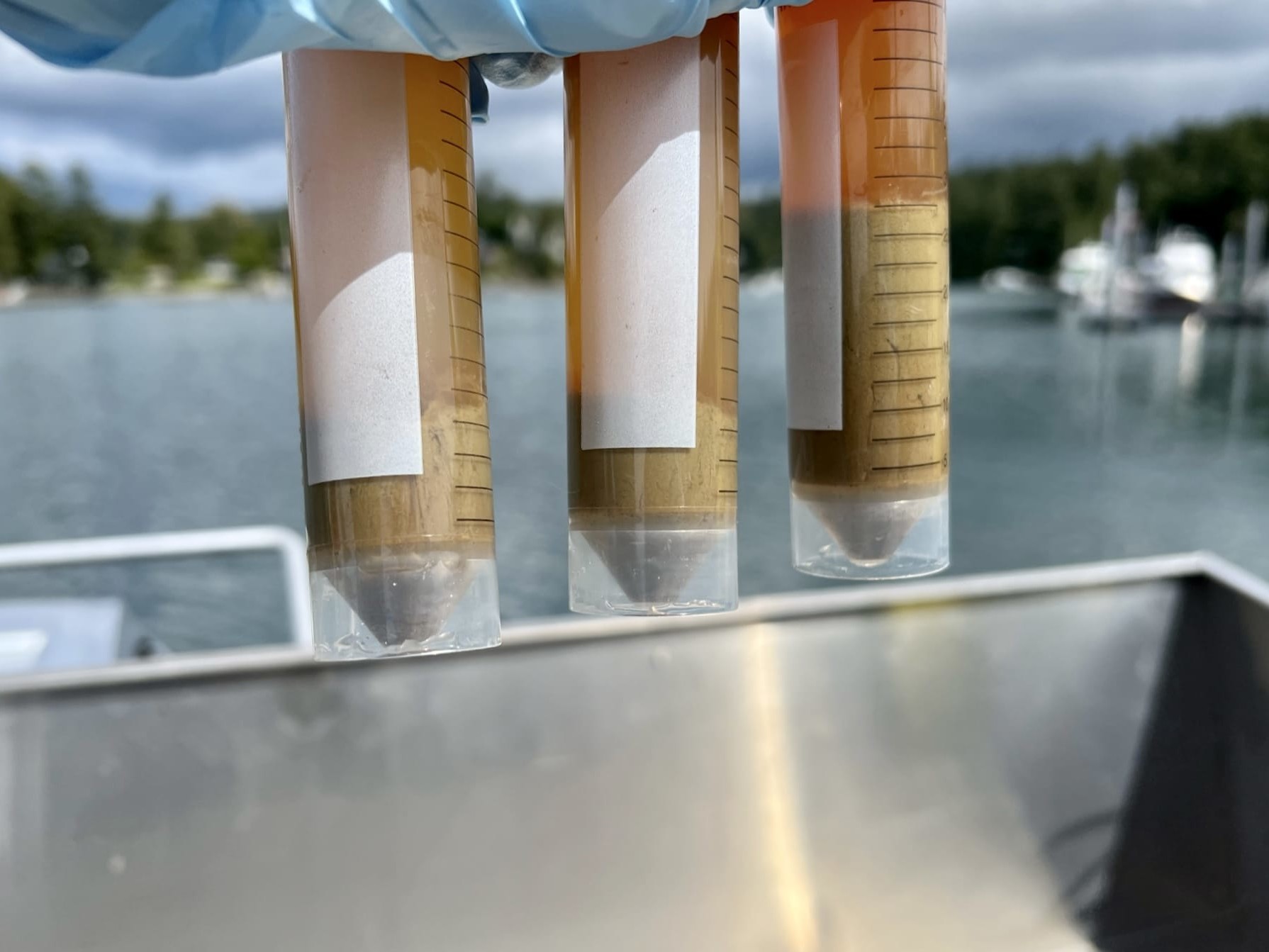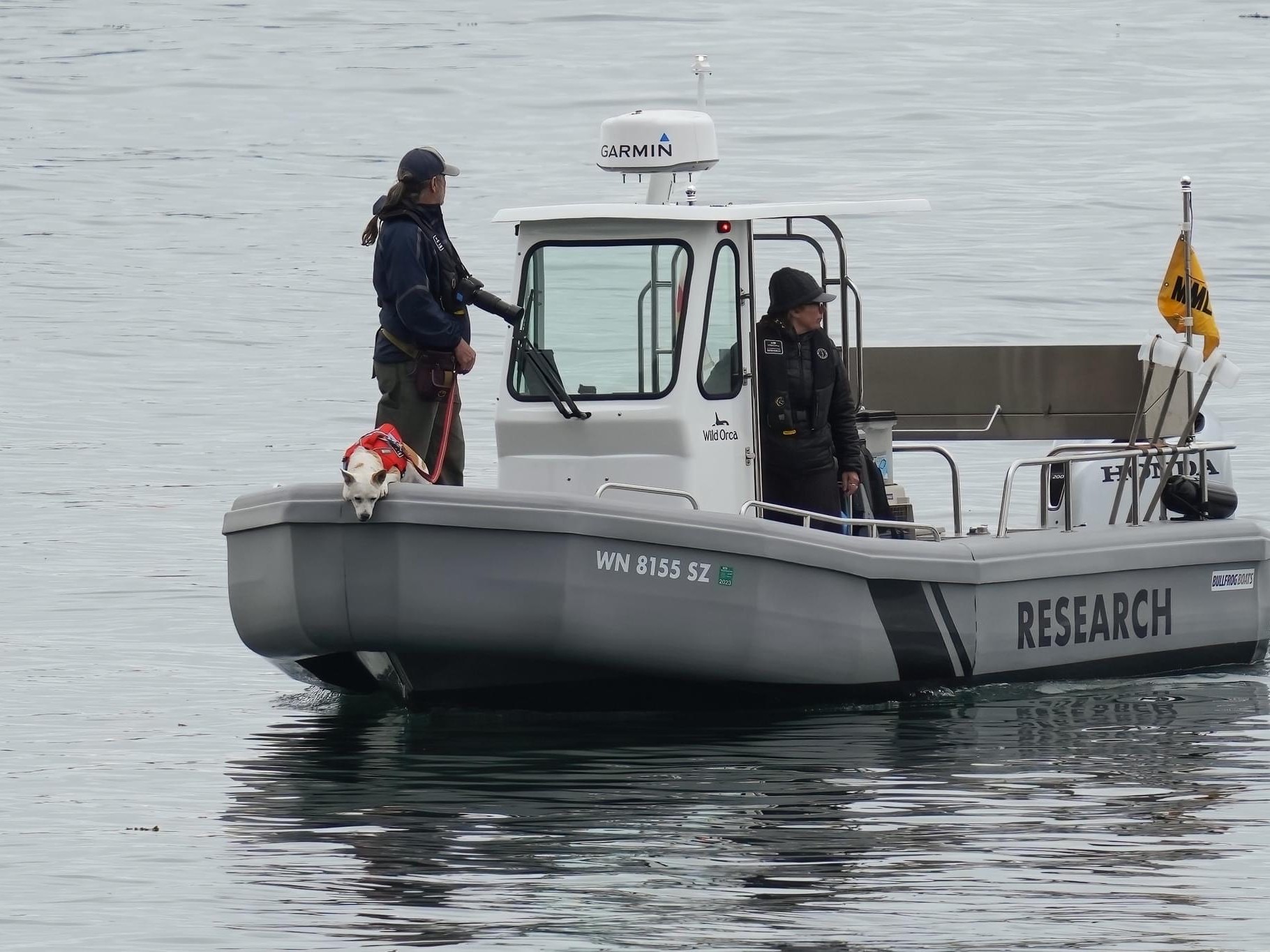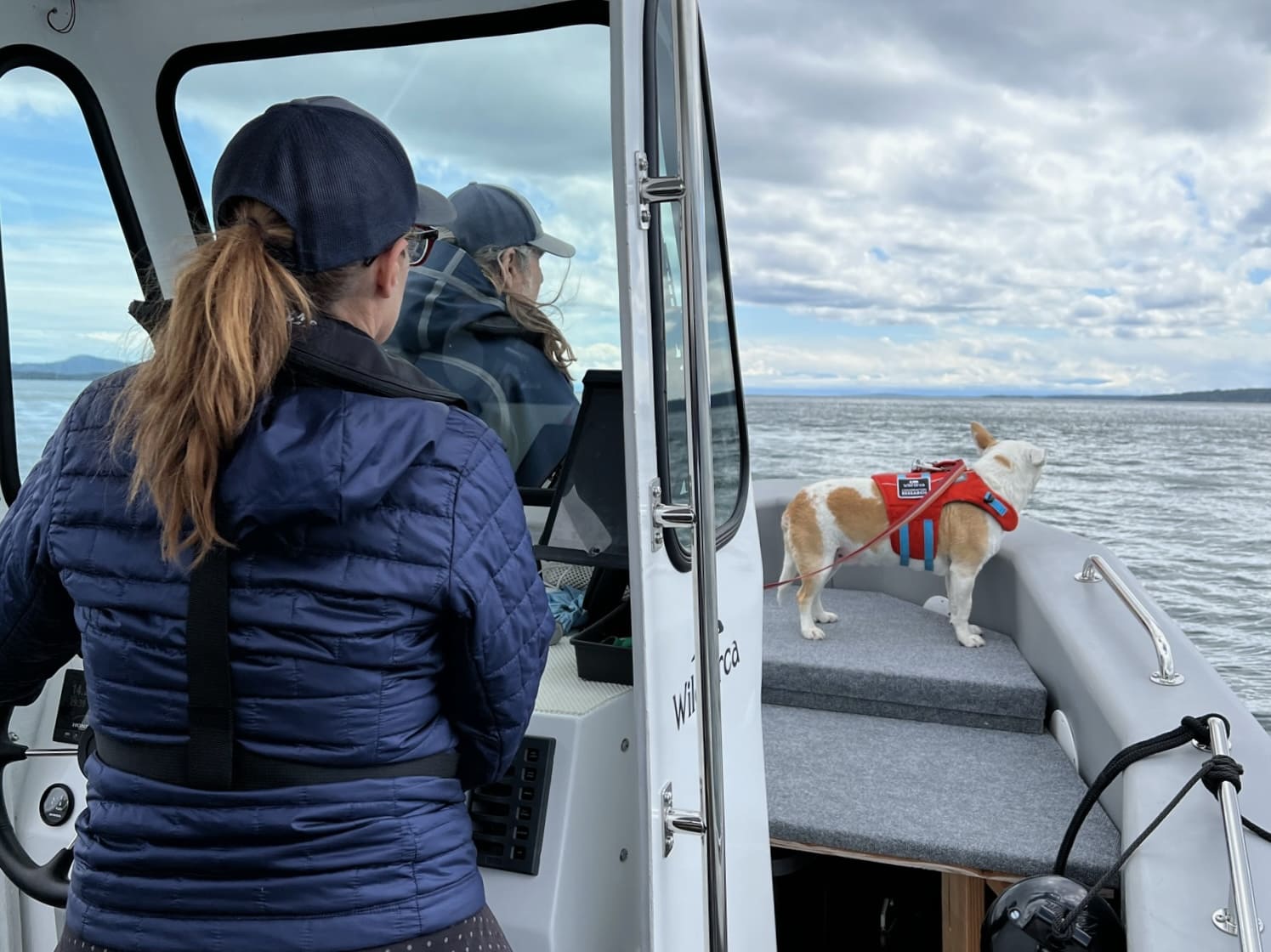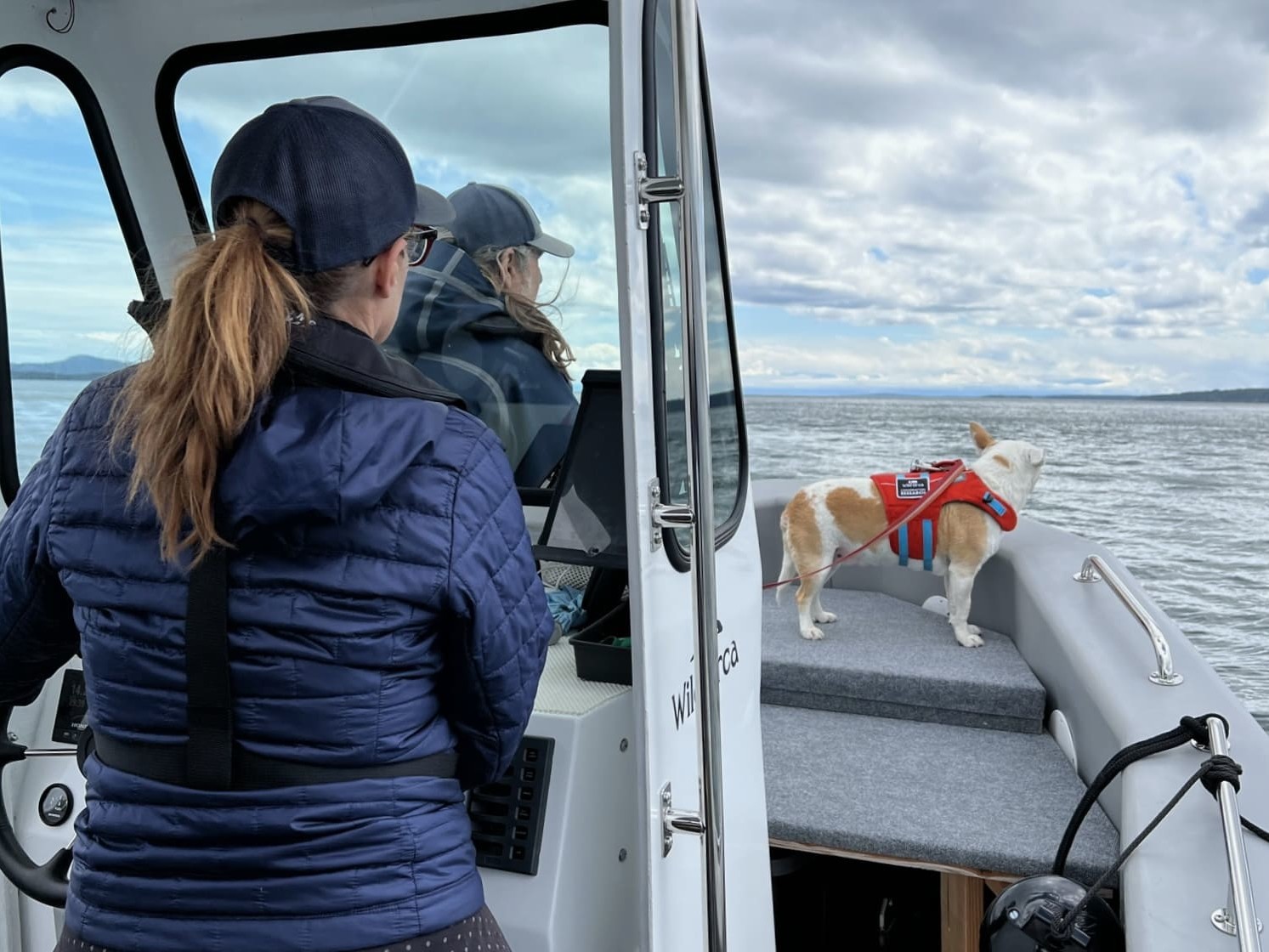L Pod
We departed Snug Harbor just after 9 AM and joined up with the L12s. Our first fecal sample was a really nice sized brown mucousy sample likely from L85. We found it early in the morning very soon after we arrived on scene. Our next sample collection was very difficult. Eba worked really hard and lead us to a small green fecal sample that was small, but big enough to collect and analyze! It was a beautiful day and we stayed with the few members of the L12s until the group became more dispersed. We returned to Snug Harbor just after 3 PM.
L Pod
We departed Snug Harbor at 10:30 AM and headed out to join up with a few members of L pod past South Beach on the South West side of San Juan Island. We picked up most of L pod at Davidson Rock in south Rosario Strait. We had a few great set ups where 5-6 individuals were grouped up side to side with nice calm water and some light wind. After sampling for most of the day, we returned to Snug Harbor just after 5 PM.
J Pod
We departed Snug Harbor at 8 AM following reports of Southern Resident killer whales north of San Juan channel. We were joined by Sarah Teaman, a research assistant from our partners at SeaDoc Society. We headed west of Waldron Island where we searched for whales until around 1:30 pm. With no new reports or sightings, we decided to return to Snug Harbor. As we were offloading gear from the research vessel, we received a report of sighting of J pod and L pod members near East Point. We raced back to the boat, loaded up, and headed out to join up with them. We initially encountered the whales near the lighthouse on Stewart Island and remained behind them as they headed south. Fairly quickly after locating them, Eba detected a scent and led us to collect several fecal samples. We then followed J36, J31, and J56, who were soon joined by some other J pod members. After a long day on the water, we returned back to Snug Harbor just after 6 PM as the whales were traveling south.
L Pod
We departed Snug Harbor just after 9 AM and joined up with members of the L12 matriline. We encountered both L77 and L88 several times throughout the day. We observed and recorded a lot of socializing at the surface, including tail slaps, breaching, rolling, and lifting. This was an excellent opportunity to collect fecal samples from L pod individuals we had not previously seen this season. We returned to Snug Harbor just after 3 PM and returned to our office to process and store fecal samples collected during the day.
J Pod
After departing Snug Harbor at 8 AM, we encountered J pod orcas and trailed them south along the west side of San Juan Island. They were traveling quickly, displaying surface behaviors like tail slapping, breaching, cartwheels, rolling, and frequent porpoising. We collected environmental and behavior data and sampled the group until we returned to Snug Harbor just after 5 PM.
J Pod Phocoenacide
Just after 10 AM, our team departed Snug Harbor and turned north towards Henry Island. We encountered a large pod of mostly J pod whales on the island’s west side. Most of the pod moved quickly past us, but about five individuals fell behind the leading group and exhibited surface behaviors like lunging, surface rolls, spy hops, pec slaps, and tail slaps. We then saw that this group of 5 orcas was chasing a juvenile harbor porpoise. 2 orcas left the group soon after, and the three others proceeded to pass the juvenile porpoise for another 20 minutes. Upon receiving permission from the stranding network, we attempted to collect the dead harbor porpoise for an examination and necropsy, but we abandoned the effort when one of the juvenile whales surprised us and recaptured the body of the harbor porpoise. We followed the group for about 30 minutes waiting to collect the body should the group of orcas abandon it, but J36 held onto it until it presumably sank. We continued down the west side of San Juan Island, following the group as they spread throughout Haro Strait. We resumed our search for fecal samples until returning to Snug Harbor just after 5 PM.
Read more about this unique encounter here.
J Pod
We started the day departing Snug harbor and heading up towards Point Roberts in the strait of Georgia responding to early whale sighting reports. When we arrived on scene we recognized the individuals we were seeing to be members of J Pod. There were about 25 whales spread throughout the Strait of Georgia in groups of two and three. We followed a few groups with Eba working to detect fecal scents. We followed J59 and her mother down through the Strait of Georgia for a while towards Stewart Island observing a few tail slaps. Towards the end of the day we positioned ahead of the main group as we were heading back to Snug Harbor and saw J16 rapidly traveling south.
J Pod
With an early morning notice that whales were on the west side of San Juan Island, the Wild Orca team departed Snug Harbor at 9:46 AM and headed down Haro Strait along the west side of San Juan Island. Whales were encountered just offshore of Hannah Heights at 10:15 in the morning.
With good wind, calm waters, the team was able to conduct distant lateral sampling behind and to the side of the whales’ path. With Eba’s keen nose, the research vessel is able to stay 300-1000 meters behind the whales which minimizes any potential disturbance.
In less than an hour the team located and collected the first sample of the day. Over the course of the next four hours Eba, Jim and Giles collected five additional samples. Many thanks to the Center for Whale Research drone team who notified us that one of the whales they were video documenting had defecated! We were able to make our way to that location and collect that valuable sample.
J Pod
Southern Resident killer whales were spotted on the west side of San Juan Island in the morning rain. The Wild Orca research crew departed from Snug Harbor and headed south down Haro straight towards Hannah Heights where they encountered a group of four whales spread loosely and foraging in the rip current at Edwards point. The whales were socially active most of the day stopping to socialize and possibly forage several times between Lime Kiln Lighthouse and Stewart Island. One fecal sample was located at 2:15 about a mile offshore between Lime Kiln State Park and the San Juan County park. Similar to the sample collected on the 26th this sample was also quite small although while the first one was wispy this one was very sticky and both of them were green which was interesting.
J Pod
We received a report that members of J Pod were heading towards east point on Saturna Island heading towards boundary pass around noon. We arrived at Snug Harbor at 1pm and departed from the dock shortly after. We travelled north up Haro Strait and found the first of the whales as they were porpoising south around Turn Point on Stuart Island. The whales were spread across the whole strait from Sydney Island back to Battleship Island in pairs or alone. We tried to track them but the water were not favorable and the whales were porpoising away from us so we close to wait back at the dock until conditions improved.
At 3:45 we once again departed from Snug Harbor with the hope of intersecting with the last of the whales heading south. We encountered a mother and calf pair on the west side of Henry Island near the bird rookery. We trailed that pair for about 20 minutes as they were foraging. Because our focal group included the youngest calf, J59 and her mom J37, we increased our following distance to minimize any chance of interference. The tide was still flooding and we were positioned well north of the whales in a position that would be optimal for detecting fecal samples in the water. We ended our research voyage as the mother and calf pair ended their foraging bout and began traveling south at fast speed.



